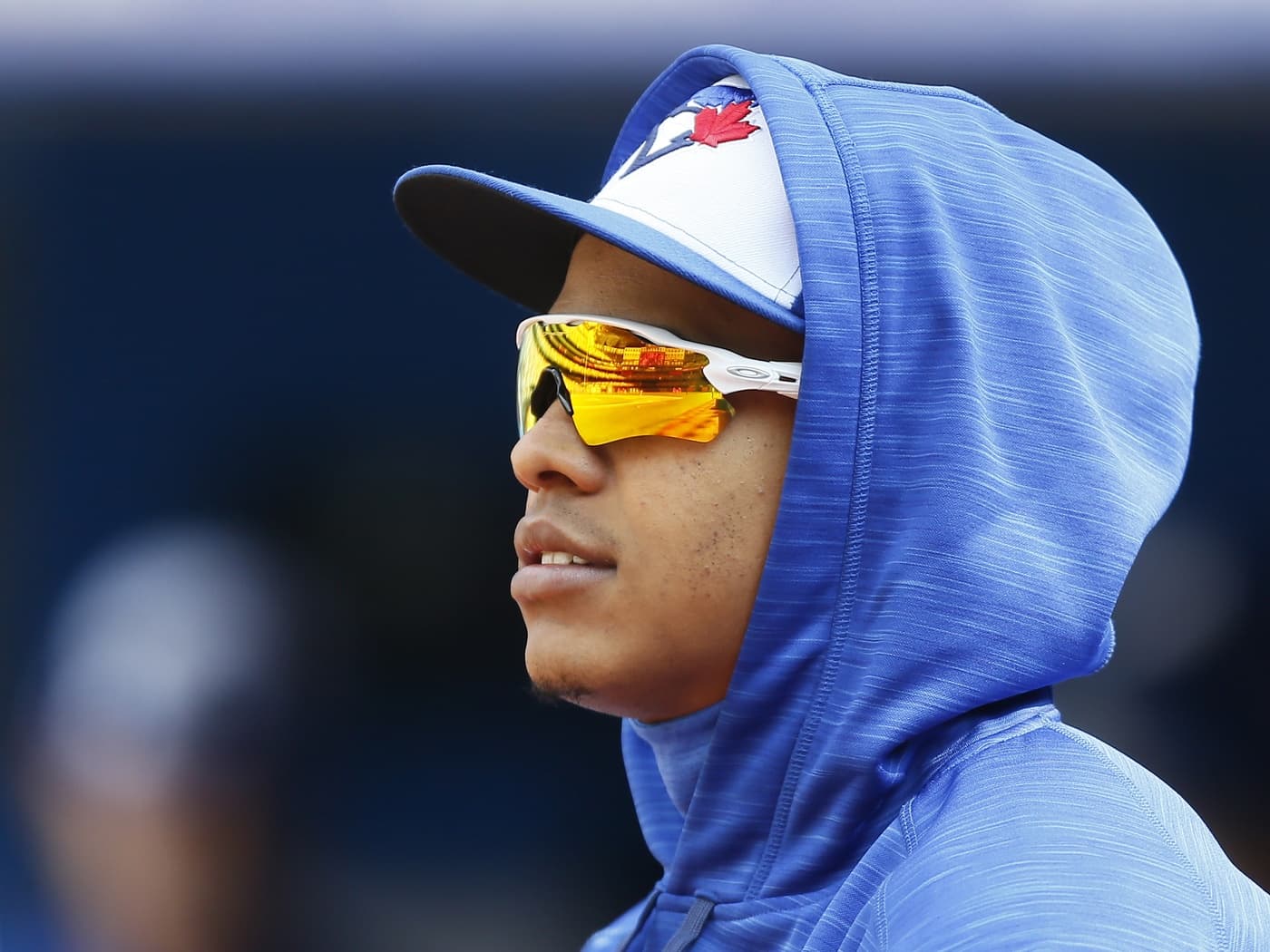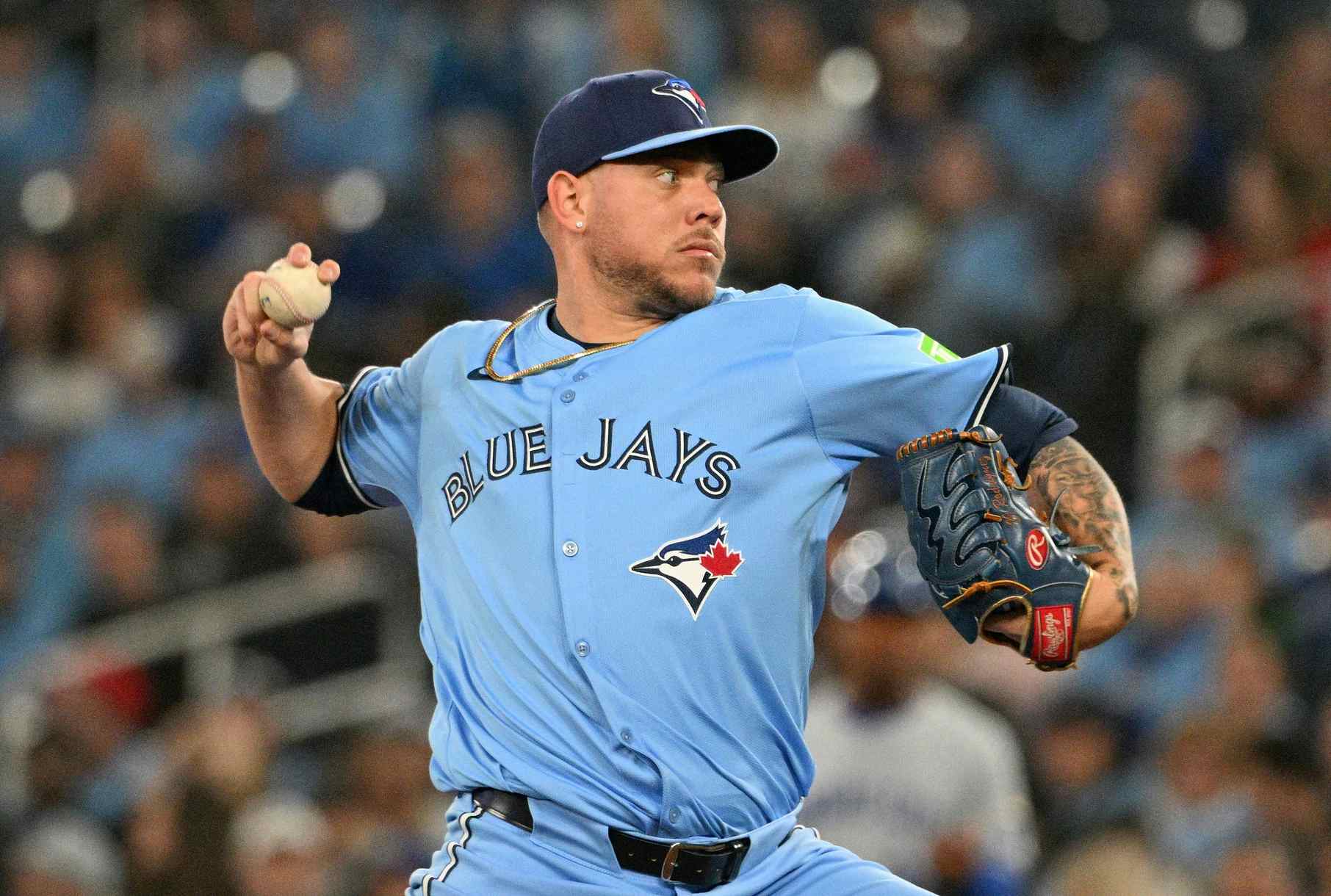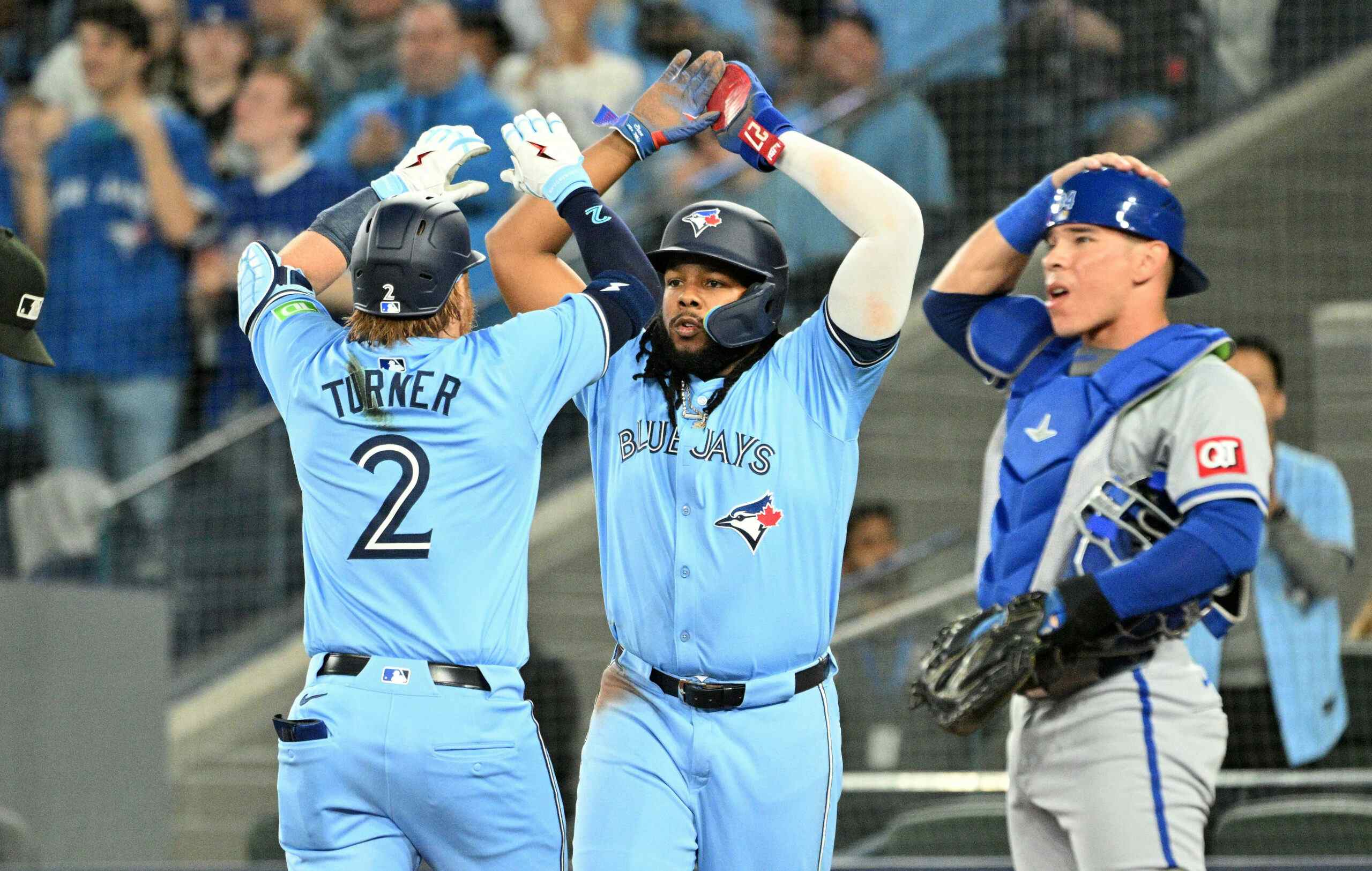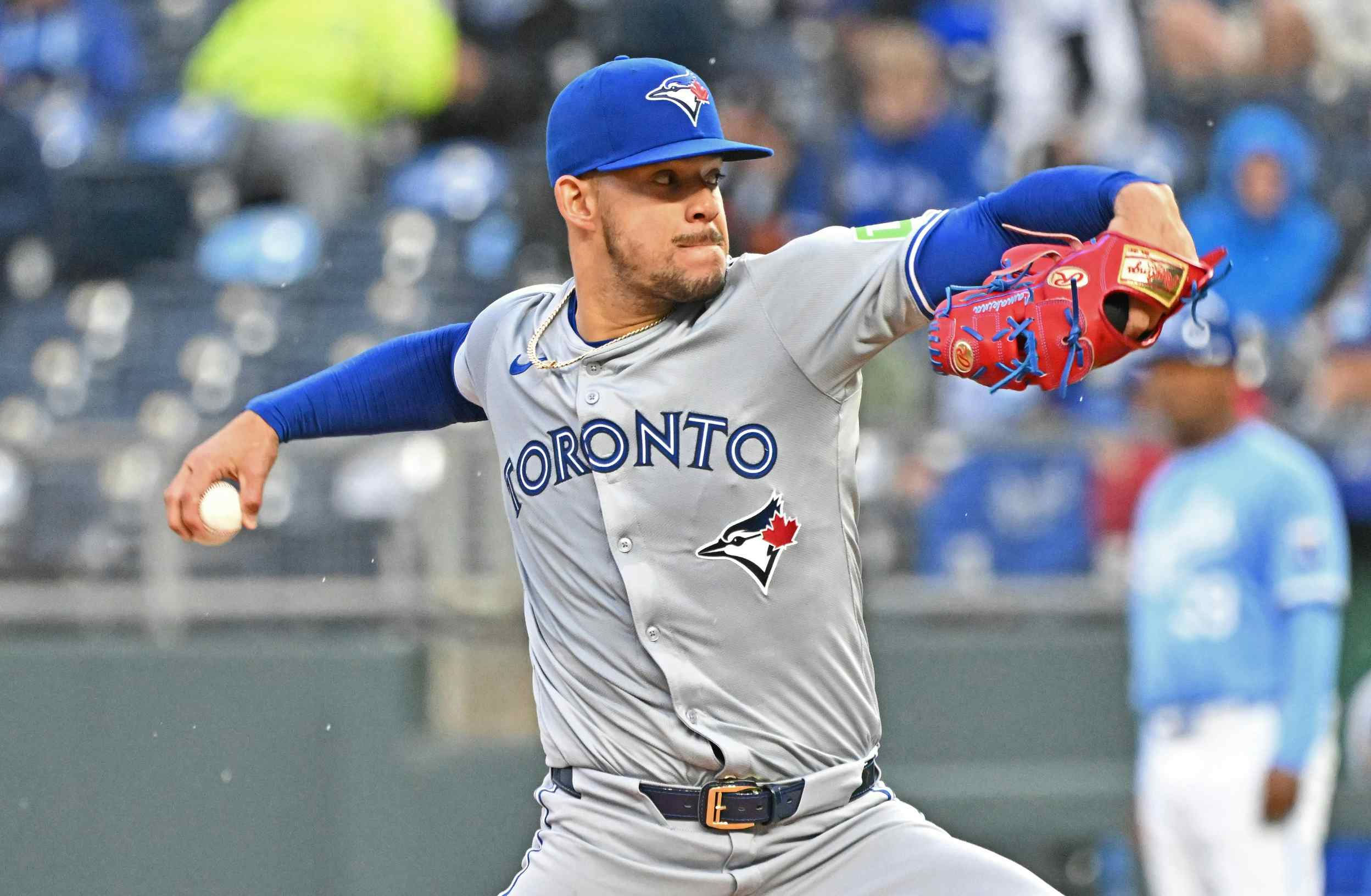Marcus Stroman Would Be Interested In a Multi-Year Extension, But Would One Make Sense?

We’ll begin with a report from Ben Nicholson-Smith of Sportsnet, who last Friday afternoon provided what must have been some very comforting words for Blue Jays fans worried about last week’s tiff between Marcus Stroman and the Blue Jays regarding his arbitration case.
Atkins and Stroman spoke Friday morning. Afterwards, Stroman said his relationship with the club remains “extremely strong.” So strong, in fact, that he’s interested in exploring a multi-year extension.“I’m hoping to have talks soon,” he said.To this point, the Blue Jays haven’t presented any type of formal offer, but Stroman said he’d love to stay with the organization long-term. The challenge of the AL East, the city of Toronto and the widespread support from Canada add to the Blue Jays’ appeal.“I can’t express to you, honestly, how much I love the city of Toronto and how much I love the country of Canada. I know I’m not a Canadian citizen, but I truly feel like one,” Stroman said. “I love this country. I do, and I want to be here. That’s it. I want to be here and I want to be here long-term. I just want to feel like I’m wanted here.”
That’s great news!
The bad news? It’s actually pretty difficult to see how an extension for Stroman would actually work for both sides.
Sure, some of the best contracts in the game are extensions given to young pitchers that bought them out of their free agent years, but there are some pretty big differences between Stroman and, say, Chris Sale — and I’m not just talking strikeout rate here. When the White Sox put an offer of $32.5 million guaranteed in front of Sale, he was about to begin his final “pre-arb” season, and set to make just $600,000. Per MLBTR, the record salaries for arbitration-eligible pitchers in their first, second, and third passes through that process are $7.25 million, $10.7 million, and $15.525 million — all three held by players who had won the Cy Young in the preceding year (Dallas Keuchel, Jake Arrieta, Max Scherzer). Add up those record-setters and you get just a little over what Sale was guaranteed, so there was a chance that he’d be able to make that kind of money by going year to year, but to do so would have required four years of impeccable health and impeccable performance.
Realistically, the number would almost certainly end up at least a little bit smaller, and with injury being such an especially serious concern in Sale’s early days (and significant for any pitcher), there was a very good chance it might end up quite a bit smaller. That $32.5 million guaranteed obviously looked very tempting, even if it meant selling off his first three free agent years for just $38 million (only $14 of which was guaranteed, as there are two club option years at the end of the deal).
In a worst case scenario if he takes the deal, he flames out and walks away with “only” $32.5 million. In a next-worst case scenario (the one that actually happened) he’s so good and so healthy that it ends up he badly undersold his first three years of free agency, and ends up going to free agency ahead of his age 31 season, having made the maximum amount off the deal (about $60 million, depending on whether or not he hits on a few bonuses).
In a worst case scenario if he doesn’t take the deal, he breaks down in his final pre-arb season and only ever takes home a fraction of those kinds of dollar figures. Or, in a slightly better scenario, his health is spotty going forward, he gets some good-not-great salaries through arbitration, and then ends up a free agent, needing at least another year to getting his career earnings back even with what the White Sox were right that moment willing to guarantee.
It’s become an incredibly team-friendly deal, but there was huge incentive for Sale to take the money.
Yes, Sale’s deal is the extreme example, but what it illustrates quite clearly is the first question we have to ask as we start to figure out what kind of a deal would make sense for the Jays and Stroman: what are Marcus’s worst case scenarios?
Stroman already took home $3.4 million last year, and this year he’s basically locked in for $6.5 million. The Jays could technically still release him before the end of spring training and pay only 1/6th of that, and there is some risk going forward that Stroman could be non-tendered, if he was struck by some kind of severe, long-term injury. But it’s a reasonably safe bet that if something like that were to happen this season (touch so friggin’ much wood), he’d still be tendered next winter. It’s really hard for players to lose money in arbitration (and at most they can only see their pay cut by 20%), so getting paid $6.5 million this year comes pretty close to guaranteeing that Stroman will get that much again next year. The very, very, very strong likelihood is that he’ll get at least that much during his final arbitration season, too.
A realistic baseline, then, is about $20 million. That is pretty close to as bad as it gets for him from here out. And with the kind of performance we can more reasonably expect from him going forward, I don’t think it’s unrealistic to think he’s more likely going to end up making $6.5M/$9M/$12M, or maybe even a little bit more.
The $30 million ballpark seems just about right for him, too. However, though the top end figures both pitchers seem to be roughly similar, Stroman’s got a hell of a lot of money pretty much already made than Sale had at the time. The kind of money that Sale was offered just isn’t going to be as enticing to Stroman — not when it requires buying out years of free agency.
If all goes well, the market value for Stroman’s first two free agent years will be north of $20 million each (he’ll probably want to add a few more strikeouts to his repertoire if he wants to get there, though). This means that on the high end, over the next five years, three in arbitration and two in free agency, he’s looking at about $70 million. On extreme the low end, he’s looking at $20-$30 million, plus whatever he can make heading into free agency at age 30 — as opposed to signing for five years now, with maybe an option or two tacked on, and then going to free agency at a point where he’s much less marketable. An extension offer somewhere in the middle would in theory make sense for Stroman to consider, but I think it would have to be on the high end of that middle. It’s not unreasonable to think that in three years, as a free agent, he could get a deal of $80 to $100 million or above. It’s far from a guarantee, obviously, but add a deal like that to the $30 million he could potentially make over the next three seasons and you’ve got one hell of a career, from an earnings perspective. It’s a not a bad bet that if he hit free agency in three years, even if his career path takes some difficult turns on the way, he could still be good for a couple one-year deals in the $5-$10 million range. A somewhat realistic worst case at this point, unless he goes full Romero (*siiiiigh*) is maybe even as high as $30 or $40 million from this point forward — as in, not including the $7 million he’s already made through two pre-arb years, one arbitration year, and from his original signing bonus coming out of the draft. The Jays would likely have to go quite a bit higher, then, to buy him out of two lucrative free agent years.
Could they extend him at five years and $60 million? $50 million? Given the attrition rates of pitchers, if I’m Stroman I certainly would think pretty hard about offers like that. But that’s just the thing: given those risks, if you’re the Blue Jays, how much sense does it make to do it? Or to go higher? Here you have a guy on what is essentially a non-guaranteed three-year contract that will most likely pay him something like $25 or $30 million. Is it worth assuming a full five years of risk by guaranteeing him a bunch of money just so you can ensure that you get years four and five for five or ten million dollars less than what they’d cost in the absolute best case scenario?
Hint: it is not.
Maybe the Jays could add some very high-paying club options to the end of that sort of offer and get him to bite, but personally I just don’t see it right now. Three years and $30 million with low risk probably suits the club just fine right now.
If Stroman hadn’t been a Super Two — if he had entered this winter having made less than $2 million in his career, with “only” $3.5 million or so due to him for 2018 — this would likely be a different story. Put an offer of $40 or $50 million in front of that player and that’s possibly enough money to make him consider selling off some free agency for that kind of security. That kind of offer would be similar to what St. Louis did with Carlos Martinez, who avoided his first crack at arbitration last winter by signing for a guaranteed $51 million over five years (plus two club options for years six and seven, worth $17 and $18 million respectively).
If the Jays had come up with the idea of an extension sooner, it would have made some sense, too. Ricky Romero’s extension worked out extremely well for the player (relatively speaking), as he signed on for five years and $30.1 million with the Jays back in August of 2010, as he was finishing up his second full big league season (at that point in Stroman’s career, he was still rehabbing from the knee injury he suffered in the spring of 2015, so an extension was never really an option). It made a whole lot of sense at the time for the team, though, too.
But as for Stroman, right now it seems to me that there’s just not enough incentive for him to start selling off free agent years, because there’s also not enough incentive to the Jays to offer him the kind of money it would realistically take to do so. Maybe next winter, with another strong season, that much more data, Stroman being that much closer to free agency, and the Jays being that much closer to having the Martin and Tulo contracts off the books, they will look to make some kind of a really big extension that would keep Stroman here a long, long time. A lot of people would love to see that, myself included. For now, though, we should all probably be quite happy with what they’ve got. The Jays are, I’m sure. And Stroman, after a little post-hearing grousing, seems to get that, too.
Recent articles from Andrew Stoeten





